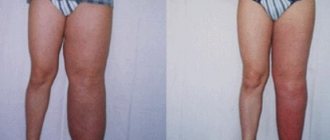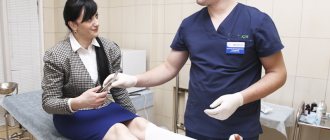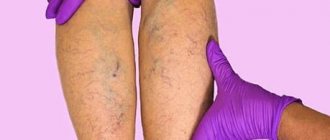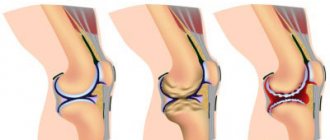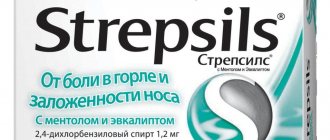This disease has a symptom such as swelling (edema). One of the most common causes of arm lymphostasis is surgery performed for oncological reasons, for example, removal of the mammary gland (mastectomy). During this procedure, resection (removal) of lymph nodes, which are areas of regional metastasis, is performed. The lymph flow slows down sharply, and pathology begins to develop. Radiation therapy used during oncology treatment “seals” the lymphatic vessels, further impairing the outflow of lymph.
Prices for treatment and doctor's appointments in our center
| Basic services | price, rub. |
| Consultation with a doctor, lymphology specialist | 3 000 |
| Consultation with the head physician | 4 000 |
| Chiropractor consultation | 3 000 |
| Price of decongestant therapy | from 2500 per procedure |
| Taking measurements for the production of compression hosiery | 2 000 |
| Compression jersey | >Price, rub. |
| Jobst Basic circular knit compression socks | 4 000 |
| Jobst Basic circular knit compression tights | 6 500 |
| Jobst Basic Circular Knit Compression Stockings | 6 100 |
| Bandage system for arm and leg | From 100 euros for 1 segment |
| Custom-made compression socks and flat knit socks | Without additional options from 90 euros |
| Massages | price, rub. |
| Manual lymphatic drainage | From 2500 per procedure |
Make an appointment
Fluid retention
Swelling on all fingers at once can occur if excess fluid appears in the body.
This happens Hand swelling during exercise: A concern? / Mayo Clinic, for example, in athletes who exercise and sweat a lot. Along with sweat, they lose sodium, which normally holds water in the bloodstream. Otherwise, it comes out of it and permeates the tissue, which leads to swelling. Liquid is also retained by Savelyeva G.M., Serov V.N., Sukhikh G.T. Obstetrics. National guidance due to hormonal changes in women during pregnancy.
What to do
If swelling in your fingers is related to sports, try Hand swelling during exercise: A concern? / Mayo Clinic:
- Remove the rings from your fingers before training;
- During exercises, periodically make circular movements with your hands to improve blood flow;
- Stretch your fingers and clench your fists between sets.
- Drink enough fluids containing electrolytes to retain water in your blood. For example, mineral water will do.
And pregnant women with swollen fingers should tell their gynecologist about this. Usually the symptom does not indicate serious problems, but it happens that edema is the first sign of a dangerous condition - preeclampsia.
What is hand lymphostasis?
Lymphostasis of the hands is a serious disease.
Due to a violation of the outflow of lymph, excessive accumulation of intercellular fluid rich in protein occurs, resulting in swelling of the soft tissues of the upper limb. With lymphostasis, there is an increase in the volume of subcutaneous fat due to edema. In the absence of proper treatment, gradual sclerosis and tissue fibrosis occur. If you do not seek professional help from qualified specialists, the disease progresses: swelling increases, changes appear on the skin in the form of hyperkeratosis, papillomatosis, maceration and ulceration, and infection occurs (nail and skin fungus, erysipelas).
Why do my hands swell?
Physiological reasons
Unilateral swelling can occur when the lymphatic and blood vessels of the arm are pressed by the body or clothing during sleep.
Small symmetrical swelling of the fingers and distal parts of the hands, especially noticeable when wearing a wedding ring, is observed after drinking alcohol, consuming salty foods and large amounts of liquid in the evening. In women, swelling of the hands, caused by hormonal changes, is often expressed during gestation. As pregnancy progresses, the symptom increases from mild pastiness to a significant increase in volume. Some patients note morning swelling of the fingers before the onset of menstruation, especially against the background of premenstrual syndrome.
Traumatic injuries
Local swelling while maintaining limb function is characteristic of bruises. Accompanied by minor or moderate pain, hyperemia, and sometimes abrasions and bruises. With hematomas, the symptom is more pronounced, and fluctuation can be detected. With sprains, tears, and ruptures of ligaments, swelling is usually more noticeable than with bruises. The pain intensifies when attempting to move or deviate the arm in the direction opposite to the injured ligament. With a complete rupture, some of the functions of the limb are lost.
Fractures are manifested by rapidly increasing swelling, deformation, loss or significant limitation of function, pathological mobility, and severe pain. In case of injuries without displacement of fragments, epiphysiolysis in children, pathological fractures, some of the listed symptoms are absent or weakly expressed, the swelling is insignificant. Dislocations are characterized by clearly visible, rapidly progressing swelling, which is complemented by severe deformation in the joint area, pain, and springy resistance when trying to move.
With frostbite, swelling affects the fingers and spreads to the hands. It can reach a significant volume, which is why the hands resemble pillows. Against the background of increasing swelling, a tingling sensation occurs, turning into a burning pain. The formation of blisters and areas of necrosis is possible, and in severe cases, some of the fingers are torn away. In patients with burns, swelling is combined with sharp pain, redness, and blistering.
Local infectious processes
Swelling, rapidly increasing twitching pain, cyanosis, hyperemia are the main symptoms of all forms of panaritium. In patients with superficial forms of the disease, swelling of the finger is local, minor or moderate. In deep forms of felon, the swelling is significant and extends beyond the finger to the hand. A more rare lesion of the fingers is chinga, a disease that occurs in people who cut up the carcasses of marine animals. Most often the proximal joint of the finger swells.
Boils and carbuncles appear on the shoulder, forearm, and less often on the back of the hand - where there are hair follicles. The swelling in these pathologies is limited; a dense bluish-purple formation with one or several yellowish areas in the follicle zone is detected. With abscesses, the purulent focus is larger in size, and the edema covers a significant part of the segment. Cellulitis does not have clear boundaries; following pus, swelling spreads along the limb.
With infected wounds, the edges and nearby tissues swell, serous and then purulent discharge appears. Erysipelas is characterized by pronounced swelling and the presence of a clearly defined red spot, reminiscent of a geographical map. The appearance of swelling and other symptoms is preceded by fever; in severe cases, disturbances of consciousness and delirium are possible.
Severe swelling is accompanied by purulent lesions of bones and joints - purulent arthritis, osteomyelitis. Pathologies are characterized by intense twisting, tearing, twitching pain, local hyperemia and hyperthermia, and a sharp limitation of movements. Fever and severe intoxication are noted.
Swelling of the hand
Joint diseases
Local swelling is observed in all forms of arthritis. The severity of edema, as a rule, correlates with the severity of the process and intensifies during periods of exacerbation.
- Rheumatoid arthritis.
There is symmetrical damage to the joints of the fingers and hands. The swelling is combined with transient or permanent stiffness, redness, and limitation of movement. - Gouty arthritis.
Manifestation of the disease with symptoms of polyarthritis in the fingers is more common in women. In young people, damage to the elbow, wrist, and shoulder joints is possible. The rheumatoid-like form occurs as oligo- or monoarthritis of the fingers. Typically a rapid increase in edema, sharp pain, dysfunction, general hyperthermia. - Psoriatic arthritis.
The shoulder joints, small joints of the hands and fingers suffer. The onset may be acute or gradual. Patients complain of swelling and pain in the affected joints. The pain syndrome intensifies at rest, at night, weakens with movement, throughout the day. Local swelling and purple-bluish skin color are visually determined. - Infectious arthritis.
It is provoked by viral and bacterial infections. With a viral infection, volatile arthralgia and transient edema are observed. Gonorrheal arthritis typically involves the elbow joint and hands. In the syphilitic form of the disease, the fingers are affected. - Occupational arthritis
. Pain and swelling are detected in the most loaded joints; the location of the lesion depends on the profession. Typists, pianists, and office workers experience swelling in their finger joints. Builders and loaders are often concerned about pain, swelling, and limited movement in the shoulder joint.
Deforming arthrosis is chronic. Swelling of the hand occurs some time after a decrease in resistance to stress, discomfort and pain. In the post-traumatic form of the disease, a connection with a previous injury (dislocation, fracture-dislocation, periarticular fracture) is revealed. In idiopathic arthrosis, there are no obvious causes; a history of joint overload is possible.
Vascular lesions
Swelling of the arm due to thrombosis of the vessels of the upper limb occurs below the location of the thrombus. Accompanied by a feeling of fullness and painful heaviness, intensifying with palpation and lowering the hand. Upon examination, tissue compaction and a purplish-bluish tint of the skin are revealed. Numbness, crawling, and decreased sensitivity are possible.
Lymphatic edema of the arm can be detected in patients who have undergone a mastectomy with removal of regional lymph nodes. Sometimes swelling develops against the background of defects of the lymphatic system, scars after burns, postthrombophlebitic syndrome, lymphangitis, lymphadenitis. At the initial stage, swelling appears in the evening and disappears on its own during the night. Then the swelling becomes permanent, combined with tissue compaction. A distinctive feature of edema due to lymphedema is a dimple that does not disappear for a long time after pressure.
Other reasons
Other conditions that cause swelling of the hands include:
- Erythromelalgia.
Attacks occur suddenly, are provoked by compression or overheating of the limb, and are accompanied by severe pain, swelling, intense hyperemia, and an increase in the local temperature of the fingers and toes. All symptoms disappear within a few minutes, sometimes several hours. - Heart failure.
At first, the swelling is hidden and manifests itself as an increase in body weight. In the final stages, swelling of the legs, arms, and face is observed in combination with ascites, hydropericardium, and hydrothorax. - Kidney diseases.
Swelling is observed in the morning, with prolonged hanging of the arms downwards. At first they are hardly noticeable, identified by the difficulties when trying to remove the wedding ring from the finger. Subsequently they become more obvious. They are distinguished by their softness, wateriness, combined with a yellowish coloration of the skin.
What are the causes?
Identifying the onset of development of elephantiasis in the hands allows you to prescribe the most effective treatment. This mechanism can be triggered by various factors, which are often interrelated. Among the most common factors leading to the progression of arm lymphostasis are the following:
- surgery to remove lymph nodes;
- negative effects of radioactive radiation in the treatment of oncology;
- serious injuries accompanied by damage to lymph nodes and blood vessels;
- fractures with a violation of the integrity of bone tissue in the form of comminuted fractures;
- infectious diseases and pathological neoplasms in the lymphatic system.
Treatment
Pre-hospital assistance
General recommendations include placing the limb in an elevated position. In case of traumatic injuries, the arm should be fixed with a splint or bandage, cold should be applied, and the victim should be given an anesthetic. For joint diseases, local medications with analgesic and anti-inflammatory effects can be used. The presence of rapidly growing swelling and intense pain is grounds for immediate contact with a specialist.
Conservative therapy
In case of injuries, the injury site is anesthetized, the arm is straightened or reduced, and a plaster cast is applied. For burns and frostbite, dressings are performed. The treatment regimen for diseases accompanied by hand swelling may include the following methods:
- Protective mode
. The patient is advised to limit the load on the arm. Orthopedic devices are used according to indications. - NSAIDs
. They are used for joint diseases in the form of topical agents, tablets or injections. Reduce the severity of pain. Eliminate inflammation and, as a result, swelling of the hands. - Glucocorticoids
. Blockades with hormonal drugs are performed for joint damage. Indications are intense pain, active inflammatory process, which is not relieved by other medications. - Vascular agents
. Angioprotectors, phlebotonics and antispasmodics are recommended for diseases of the veins and lymphatic vessels. - Physiotherapy
. To reduce pain, relieve inflammation, and improve blood circulation, medicinal electrophoresis, magnetic therapy, laser therapy, UHF, mud therapy, and lymphatic drainage massage are prescribed. - Physiotherapy
. Special exercise therapy complexes are used during the rehabilitation period after injuries, and for diseases of blood vessels and joints. Therapeutic exercise is supplemented with massage and manual therapy.
Surgery
Taking into account the characteristics of the pathology that causes swelling of the hands, the following surgical interventions can be performed:
- Injuries
: osteosynthesis of the humerus or forearm bones, open reduction of dislocations of the shoulder and elbow joint, opening of hematomas, excision of areas of necrosis during frostbite, plastic surgery for burns. - Infectious processes
: opening of felon, boil, carbuncle, abscess or phlegmon, arthrotomy, sequestrectomy. - Joint diseases
: arthroplasty, arthrodesis, endoprosthetics. - Vascular pathologies
: regional thrombolysis for venous thrombosis, tunneling for lymphedema, lymphovenous shunting.
After operations, painkillers are prescribed, antibiotic therapy is carried out, and rehabilitation measures are carried out using physiotherapeutic techniques.
Folk remedies
Folk remedies will help as the main treatment. We will describe the most effective recipes for treating swollen fingers:
- Decoction of pine buds : 1–2 tsp. kidneys, pour 300 ml of boiling water, keep in a water bath for 10 minutes, when it cools down, drink during the day. Take throughout the week.
- Fresh pumpkin juice: drink 200 ml of freshly prepared juice every day for at least a month. The recipe is healing, swelling does not return after such treatment.
- We make baths: with essential oil, calendula oil, eucalyptus oil. Add 10 drops of essential oils to well-warm water (1–2 liters) and immerse your hands for 15–20 minutes. Do this every evening until complete healing.
- Fresh cucumbers also help a lot; we make juice and drink it when we’re thirsty. You need to drink at least 500 ml per day. Or just eat fresh, preferably homemade, cucumbers and plenty of them.
- We take table 3. l. anise seeds , pour 300 ml of boiling water and cook for 5 minutes. When it cools down, take 1-2 tbsp. l. 3 times a day, about 2-3 weeks.
Carpal tunnel syndrome
In this disease, the nerve that runs from the forearm to the hand is compressed by Carpal Tunnel Syndrome Fact Sheet / National Institute of Neurological Disorders and Stroke in the tissues of the wrist between the ligaments and bones. Unpleasant symptoms appear:
- numbness and tingling in the fingers, especially the thumb, index and middle fingers;
- soreness and swelling in the fingers;
- weakness in the arms;
- muscle atrophy at the base of the thumb in advanced cases.
Numbness, tingling and pain may occur at night or in the morning on one or both arms. And then these signs begin to bother you during the day. For example, when a person holds a phone near his ear or drives a car.
What to do
You need to see a doctor. He can recommend the Carpal Tunnel Syndrome Fact Sheet/National Institute of Neurological Disorders and Stroke:
- Wear a splint. This is a special device that is fixed to the hand overnight;
- Avoid activities that increase symptoms;
- Take over-the-counter pain relievers;
- Use hormonal drugs from the group of corticosteroids;
- Inject a local anesthetic into the joint.
If treatment doesn't help and symptoms get worse, surgery may be necessary.
First aid at home
Swollen fingers can be treated with herbs, brew: horsetail, fox birch, St. John's wort. You can buy compression gloves at the pharmacy - they are especially convenient.
First aid should begin with improving blood flow in the fingers:
- Take off everything unnecessary : rings, bracelets, watches; Treat the open wound with an antiseptic and apply a bandage.
- Wrap some ice in a clean cloth and apply it to your swollen fingers. You can also make an iodine grid after some time.
- Massage will also relieve swelling; simple manipulations will increase blood circulation and the outflow of excess fluid.
- For inflammatory diseases you can take : Diclofenac, Nimesil, Ibuprofen.
- In case of allergic reactions , it is necessary to stop any contact with the allergen. Take any antihistamine: Larotadine, Suprastin, Fenistil.
Suprastin
Fenistil
Larotadine
Akriderm GK preparations for hand allergies
Depending on the form of the disease and the severity of the course, both ointment and Akriderm GK cream are used. They have a similar composition; the main difference is that the cream has a softer texture, so it is absorbed faster by the skin. It is more appropriate to use it for the treatment of acute and subacute conditions, as well as for weeping and thin areas of the skin. In turn, the ointment stays on the skin longer and has a high penetrating ability, therefore it is suitable for chronic inflammation accompanied by severe dryness and flaking.[10]
When Akriderm GK is applied to damaged skin, the preparations soften and cool the affected area, relieving itching and redness. The active substances not only improve symptoms, but also help eliminate pathogenic microorganisms. Thanks to the combined composition, which includes several active substances and auxiliary components, the treatment brings a noticeable and long-lasting effect.[11]
Physiological causes of finger swelling
We contemplate swollen fingers for various reasons, but more often it happens for quickly passing physiological reasons:
- In hot weather, our blood vessels dilate rapidly . Thanks to this, the body can cool itself by simply releasing heat through the skin.
- But sometimes excess fluid accumulates in the vessels, and when the vessels dilate, a small part of the fluid can flow into the soft tissues, and the fingers begin to swell. Prolonged physical activity contributes to this: cleaning a personal plot, digging soil, hand washing, performing repair work, long hikes.
- You can also see swollen fingers in healthy, young people. After rest, everything usually goes away without a trace. There are people who have troubles after the cold. This is called cold allergy or urticaria. Frost and low temperatures can cause spasms in blood vessels and impair blood circulation.
- This is also possible if there is a lack of body fat in a thin person. This disease is most often transmitted at the genetic level, but it can also be acquired. Being overweight or obese also eventually causes swollen fingers. Irreversible changes occur in the lymphatic system, so fluid accumulates in the hands.
- In women, swollen fingers may occur due to PMS (premenstrual syndrome). There is an increase in estrogens, and they are able to retain water in the tissues.
Swollen fingers can be seen after excessive consumption of liquid at night, drinking alcohol, or salty foods. The water-salt balance in the vascular bed and intercellular fluid is disrupted. Therefore, sodium from the plasma goes directly into the tissue and retains water.
Diagnosis of diseases
As you know, you need to fight not the symptom, but the root cause of the disease. To ensure that swollen fingers no longer cause trouble, you need to carry out a diagnosis. For an appointment, you need to go to a therapist, and if necessary, he will refer you for a consultation to more specialized specialists: an allergist, an infectious disease specialist, a nephrologist or a cardiologist.
Diagnosis begins with collecting anamnesis, analyzing complaints, and existing side symptoms. They will conduct a visual examination of your hands, examine swollen fingers, and perform palpation.
If necessary, instrumental and laboratory tests will be prescribed:
- Ultrasound;
- MRI of the hands;
- Dopplerography;
- X-ray;
- clinical analysis of urine, blood;
In case of heart disease, an electrocardiogram will be prescribed; if the kidneys are bothering them, an ultrasound, MRI, and tests will be performed; if there are problems with the thyroid gland, an ultrasound examination will be performed.
Rheumatoid arthritis
Joint inflammation most often begins in the hands. Rheumatoid Arthritis / American Academy of Family Physicians is believed that the disease is associated with autoimmune reactions, when the body attacks its own tissues and produces antibodies to them.
In addition to swelling of the fingers, other symptoms of rheumatoid arthritis include:
- joint pain;
- joint stiffness, especially after sleep;
- temperature increase;
- redness of the hands;
- fatigue and loss of appetite;
- bumps under the skin of the fingers are rheumatoid nodules.
What to do
With such symptoms you need to go to the doctor. He will conduct an examination, which includes blood tests, x-rays of the joints, and possibly a test of joint fluid. Only after confirming the diagnosis will the specialist prescribe treatment. It will not be possible to completely get rid of rheumatoid arthritis Rheumatoid Arthritis / American Academy of Family Physicians, but the following will help reduce symptoms:
- over-the-counter pain relievers;
- immunosuppressants;
- hormonal medications;
- antirheumatic drugs.
In addition, you will have to lose weight if you are overweight, quit smoking, adhere to proper nutrition, reduce the load on your joints, but at the same time engage in aerobics and physical therapy.
In severe cases, surgery may be necessary.
Structure of fingers
Four human fingers consist of 3 phalanges:
- proximal (longest);
- average;
- the shortest (nail), distal.
Phalanges of the fingers
The first 2 are slightly similar in structure, but different in size. For example, the proximal phalanx has a spherical articular surface. This is necessary for articulation with the nearby metacarpal bones. And providing an unlimited range of movements. The interphalangeal joints cannot provide extension and flexion of the finger; they are uniaxial.
Joints of the hand
The distal phalanges have a flattened shape and are smaller in size, ending in nail plates.
The only exception is the first finger; it has 2 phalanges: proximal, distal. These phalanges are shorter, but massive. And the anatomical structure provides it with greater mobility, stability and opposition to the other fingers.
Injury
If you hit your finger hard, break it, dislocate it, or get a sprain, swelling will occur Dislocations / US National Library of Medicine. It will be accompanied by redness, pain, and sometimes bleeding.
What to do
For minor bruises, you can apply a cold compress to your finger and take an over-the-counter pain reliever. But if the pain is severe, the wound is large or the finger is bent unnaturally, you need to consult a doctor. For a dislocation, reduction will be required, and for a fracture, fixation and restoration will be required.
